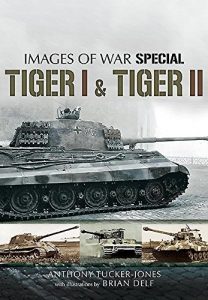The German Tiger I and Tiger II (known to the Allies as the 'King Tiger' or 'Royal Tiger') were the most famous and formidable heavy tanks of the Second World War. In their day their awesome reputation inspired such apprehension among Allied soldiers that the weaknesses of these brilliant but flawed designs tended to be overlooked. Anthony Tucker-Jones, in this illustrated history, tells the story of their conception and development and reconsiders their operational history, and he dispels the legends and misunderstandings that have grown up around them.
The Tigers were over-engineered, required raw materials that were in short supply, were time-consuming to manufacture and difficult to recover from the battlefield. Only around 1,300 of the Tiger I and fewer than 500 of the Tiger II were produced, so they were never going to make anything more than a local impact on the outcome of the fighting. Yet the myth of the Tigers, with their 88mm guns, thick armour and brutal profiles, has grown over time to the extent that they are regarded as the deadliest tanks of the Second World War.
Anthony Tucker-Jones's expert account of these remarkable fighting vehicles is accompanied by a series of colour plates showing the main variants of the designs and the common ancillary equipment and unit markings.
Anthony Tucker-Jones is a prolific writer on the history of fighting vehicles and armoured warfare. He has also written extensively on military affairs and terrorism. After a career in the intelligence community, he became a freelance defence writer and military historian. His most recent books are Armoured Warfare on the Eastern Front, Armoured Warfare in the North African Campaign, Armoured Warfare in the Battle for Normandy, The Kalashnikov in Combat and The Soviet-Afghan War.
Este sitio es seguro
Usted está en un sitio seguro, habilitado para SSL. Todas nuestras fuentes son constantemente verificadas.



